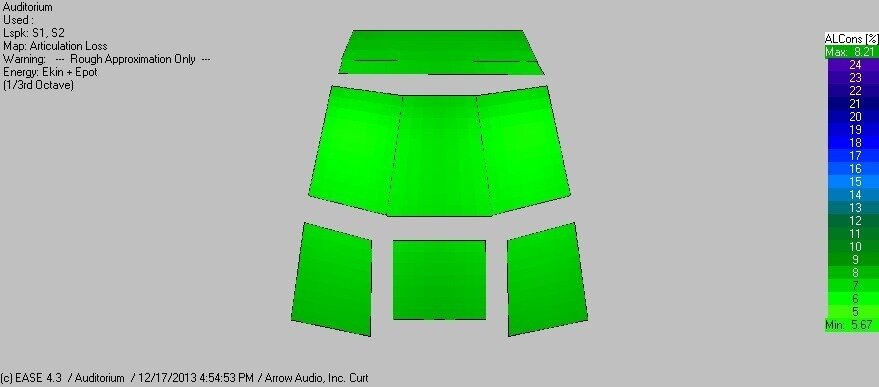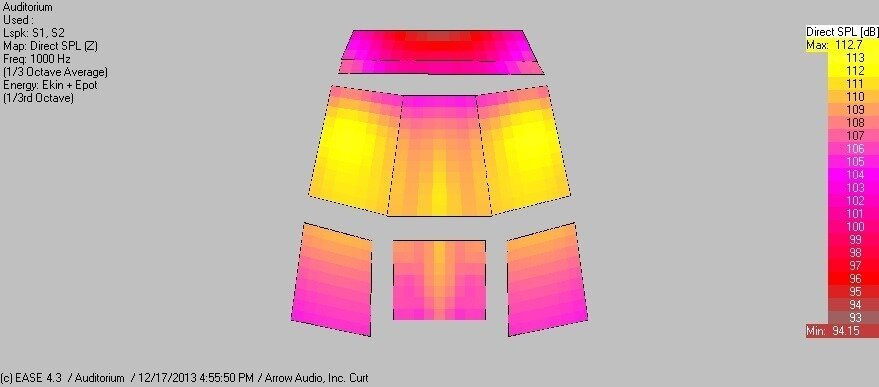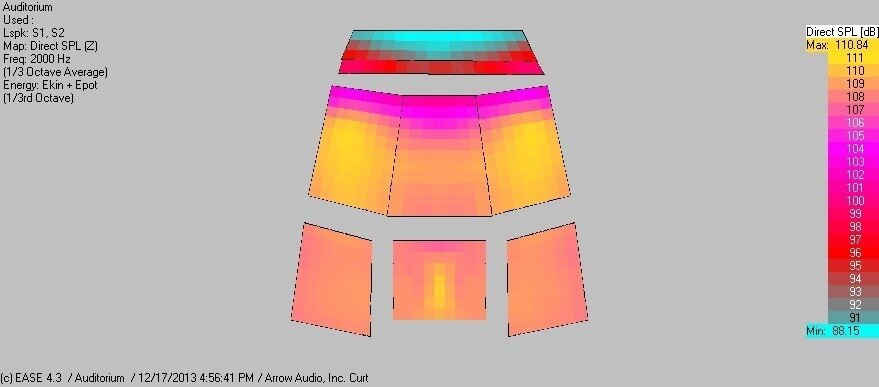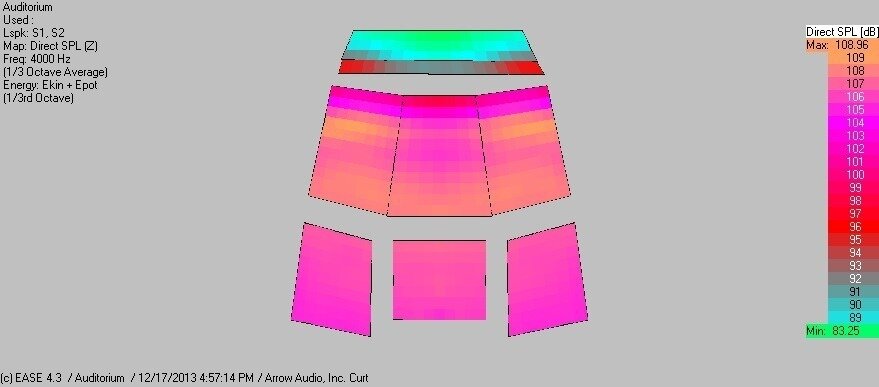sdauditorium
Active Member
We received a second bid for our upcoming sound system install, and they included a few graphics from EASE based on the speaker setup they felt best worked in our space (mid-size house: seats 592, no balance, proscenium opening of approx. 50' w x 18').
Before I mention the brand/model they chose, I want to know if you think these results are acceptable. I realize it could be a bit better, but we're looking at a $35,000-$37,000 budget. They'd like to install powered cabinets along with a sub per side (flown).
Not knowing all of the specifics, I'd appreciate feedback.




Before I mention the brand/model they chose, I want to know if you think these results are acceptable. I realize it could be a bit better, but we're looking at a $35,000-$37,000 budget. They'd like to install powered cabinets along with a sub per side (flown).
Not knowing all of the specifics, I'd appreciate feedback.






